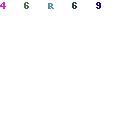CAS Dean’s Office Looks at Enrollment and Retention
 The SIUE College of Arts and Sciences Dean’s Office recently put together a study to look at CAS enrollment and retention numbers. The aim of the study was to see what areas the college is doing well in and to identify areas for improvement.
The SIUE College of Arts and Sciences Dean’s Office recently put together a study to look at CAS enrollment and retention numbers. The aim of the study was to see what areas the college is doing well in and to identify areas for improvement.
“The college is focusing on how to be as efficient as we can be,” Wendy Shaw explained, “we were pleasantly surprised.”
One of the main reasons for conducting the study was to get a look at CAS numbers as they stand separately from undeclared majors. In the past common practice at SIUE has been to group undeclared enrollment with CAS. This can lead to skewed results as CAS advisers have no interaction with undeclared majors, many of whom are at SIUE to pursue non-CAS programs like nursing or pharmacy. When looking at CAS numbers separately from the undeclared the results were surprising.
“If you combine CAS and undeclared it looks as though we’ve lost students, when in reality we’ve gained,” Larry LaFond explained.
Since 2008 CAS has seen a growth of two hundred eighty five enrolled undergraduate majors, while undeclared majors have declined by three hundred and thirty three. CAS graduate student enrollment increased slightly between 2007 and 2009 remaining relatively steady since then, this is unusual as nationally graduate school enrollment has been in decline. The number of graduate students completing their advanced degrees has seen a steady increase since 2009 which indicates improvements in retention of graduate students.
A large number of CAS classes are also frequented by non-CAS majors, this may be why undeclared numbers are conventionally grouped with CAS. In order to get a clearer picture of how the college is serving the university at large the Dean’s Office took a look at Student Credit Hour Production (SCH). The SCH numbers reflect the number of credit hours students are enrolled in per fiscal year within the college, by looking at SCH it’s possible to get an accurate assessment of how many students are taking advantage of CAS courses regardless of major. CAS has seen a steady increase in SCHs since 2008 with an overall increase of 9,905 credit hours.
Shaw shared that one of the downsides of the data sets they currently had available was that they don’t give a clear picture of the number of undeclared students being recruited into CAS programs, an area that the college has been trying to focus on through programs like CAS Hands On Day.
“If we get somebody in one of our majors then we tend to retain them,” LaFond shared, “the sooner we get them into one the the more likely it is.”
Moving forward retention of students both undeclared and within CAS majors is a high priority for the college. One of the major challenges facing the entire university is seeing that students find their way into degree paths, and that they receive the support they need to graduate successfully.
“What we’re interested in is: how do we best support individual students to persist through the program and to graduate,” Shaw explained.
Filed Under: General CAS Stories • News












